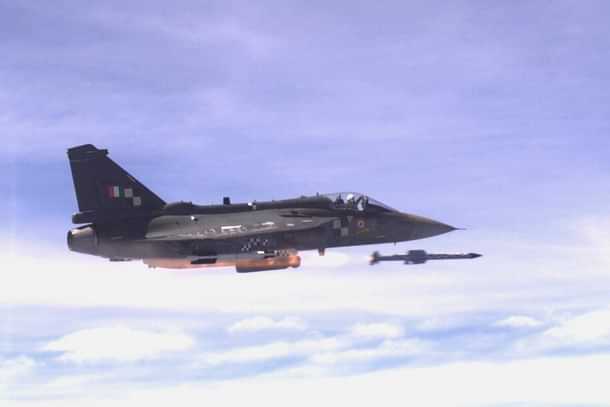Defence
Made-In-India Astra Missile Test Fired From LCA Tejas For The First Time
Swarajya Staff
Aug 23, 2023, 02:32 PM | Updated 02:32 PM IST
Save & read from anywhere!
Bookmark stories for easy access on any device or the Swarajya app.


The Indian Air Force (IAF) has successfully tested the indigenously developed Astra Beyond Visual Range Air-to-Air (BVRAAM) missile from a Tejas fighter aircraft for the first time.
The test was conducted using the Tejas Limited Series Production-7 (LSP-7) aircraft. In the past, the missiles been tested from a Su-30 MKI fighter.
Developed by the Defence Research and Development Organisation, the missile is believed to have a range of over 100 kilometers.
The Defence Ministry has already ordered 248 Astra Mk-1 missiles — 200 for the Indian Air Force and 48 for the Indian Navy.
Work is also underway on a new, long-range variant of the missile.
Called Astra Mk-II, the missile recently appeared in a promo video put out by the IAF ahead of the 90th Air Force Day in October last year.
Reports say Astra Mark-II will have improved jammer resistance and an indigenous seeker. The missile could be equipped with a dual-pulse rocket motor to improve the range and performance.
India is also working on Astra Mk-III, which will have a range of over 300 km. The missile will have solid fuel-based ducted ramjet (SFDR) propulsion.
Over the last few years, the DRDO has conducted multiple tests of SFDR technology critical for long-range air-to-air missiles.
The development of SFDR technology will enable India to make its own long-range air-to-air missile, which could mirror the capabilities of the best missiles in this class, like MBDA's Meteor, which the IAF uses on its Rafales.
The Meteor missile also depends on its ramjet propulsion for "more energy to manoeuvre during the endgame of the engagement."
"The ramjet motor [propulsion system] provides the [Meteor] missile with thrust all the way to target intercept, providing the largest No-Escape Zone of any air-to-air missile," the literature on the MBAD website reads.





